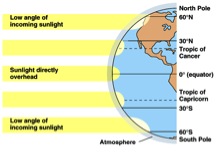When Hurricane Sandy hit New York in 2012, many residents in Queens were surprised, much like New Yorkers in the other four boroughs. The storm was thought to have been the result of, at least in part, rising temperatures that cause the ocean surface to churn more severe storms. The hurricane ripped a few shingles from my home and left a leaky roof in its wake. It also flattened a part of the fence but did more harm to my neighbor’s property, whose fence and house were partly crushed by a tree, that made the sidewalk impassable. Luckily, we only had to contend with a brief blackout and not a flood. I said brief, not to mean that going without electricity for an entire day was not an inconvenience, but because many New Yorkers faced a worse fate by losing virtually everything. I saw my hairdresser days later, as she was about to open her salon. I greeted her from across the street with a wave of my right hand but when she didn’t respond, I knew immediately that something was really wrong. Walking from her car with her head bowed, she slowly turned the key to enter her shop. As I approached her, the tears that welled up in her eyes told the story better than the words that leaped from her lips. Hurricane Sandy made her hurt badly after floodwaters swept away the family’s cars, and ravaged her basement. She had lost so much that she contemplated a trip back to the Caribbean. It was the day before the national elections. Her heart was heavy enough to forego her vote, although she was always passionate about President Obama’s second term in office.
Climate change, to most people, is synonymous with global warming; however, it can also mean global cooling. According to climate scientists, global temperatures have been steadily increasing over the past hundred years. Ask anyone in Queens about climate change and he or she would probably be able to comment but have nothing to “show for it”. The effects of climate change may not be readily evident in Queens but understanding what it is, can certainly make a difference in the way we view the phenomenon.
The climate of any place refers to the conditions of the atmosphere over a long period of time. In other words, each year in New York, one would expect spring to follow winter, and fall to follow summer. In the Caribbean or anywhere else in the tropics, the expectation is very different because there are generally two seasons each year – dry/sunny and wet/rainy. The location of a place on Earth determines the angle at which the sun’s rays strike the surface; therefore, the temperature varies, becoming increasingly colder farther away from the equator. It is only at the equator that the sun’s rays radiate directly.

In addition to atmospheric temperature, there are other aspects of climate that determine their combined influence on a place, including winds, pressure, precipitation, humidity, etc. Whenever, the natural or expected pattern of the seasons of a particular location changes gradually and is sustained for a prolonged period of time, this phenomenon is referred to as climate change. In New York, there is evidence that the climate over recent years has been warmer than in previous decades, observed mainly during the winter season. It is this noticeable rise in temperature that is referred to as global warming by atmospheric scientists, because similar changes are observed in many places around the world.
As with everything, this increase in temperatures can be explained by identifying and comparing factors that were not present before. In other words, the climate has changed along with other factors on Earth, both natural and human-induced. According to geologists, the natural factors are attributed to slight changes in the earth’s tilt and orbit, as the earth revolves around the sun. Effects of such changes; however, take thousands of years to be felt, such as an ice age. Effects resulting from changes on shorter time scales such as increasingly warmer temperatures within a decade, are attributed to anthropogenic or human activities. These are activities that support a growing human population in areas that were previously occupied by, and could more adequately support fewer people. There is a corresponding increase in the burning fossil fuels (oil, coal and natural gas) to produce food, heat and transportation, with more people living and working in certain places. Pollution produced from these sources, contribute to changes in the atmosphere that may impact our climate over time.
Air pollutants are not easily seen with the naked eye but can be collected and measured daily, weekly, etcetera, using special instruments. Scientific studies have shown that there are more pollutants in the air today than in the past, when fewer people lived on Earth. The particles and gases emitted into the air when we drive our cars, have the ability to trap more of the sun’s heat than normal. If we continue to use fossil fuels in larger quantities for domestic heating, electricity and transportation, this problem may not go away but is likely to get worse. One positive response to climate change, is the step that some residents in Laurelton, Rosedale, Cambria Heights and contiguous neighborhoods have taken, to install solar panels on their roofs. They are helping to reduce the amount of air pollutants released to the atmosphere, and would likely reduce their electricity bills in the long term. If more people make choices to reduce the amount of fossil fuels they use, certain atmospheric phenomena that have increased in intensity and frequency would probably be kept at bay. Tropical storms will continue to be with us but are we ready for another Hurricane Sandy?











